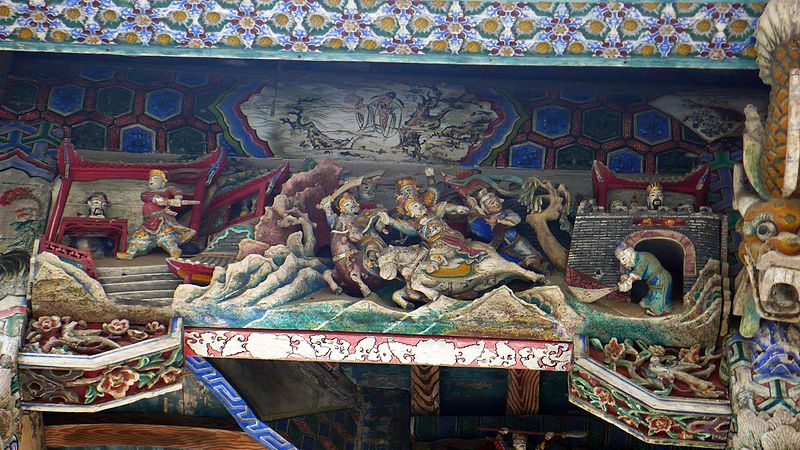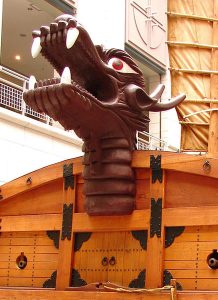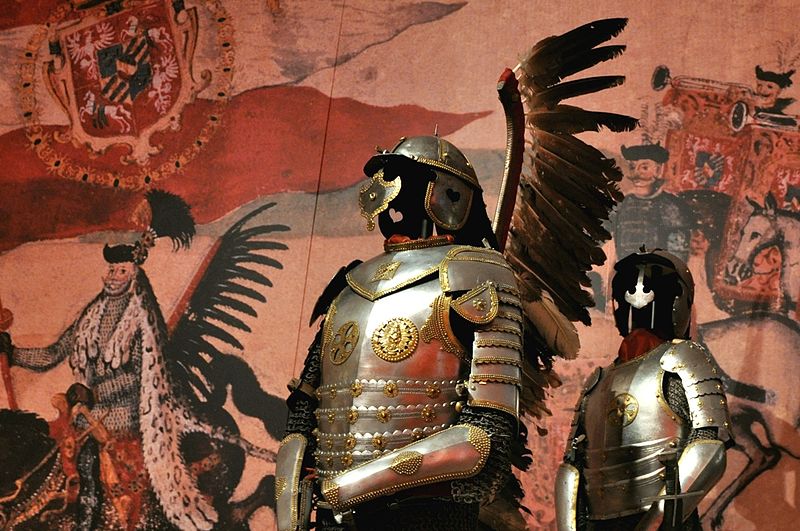One of the most important and often neglected aspects of war is psychological warfare, or psywar. This is the unseen killer of many battles, much like an assassin, the victim often isn’t aware of anything, until it’s too late.
Sacred Shields

Everyone knows about how the Egyptians worshipped cats, and saw them as sacred beings, but not many know how this cat-worship ended up biting them in the ass. When the Egyptians realised the Persian were attacking, they likely expected normal warfare to take place; instead they saw an army equipped with shields that had pictures of cats drawn onto the front. The Egyptians refused to attack the Persians, because of their belief that they were sacred animals. The Persians also brought with them dogs, sheep, ibises, and cats; all animals the Egyptians worshipped. This is a brilliant early example of psychological warfare, and shows just how deadly it can be.
Vlad The Impaler

Vlad was maybe the most terrifying tyrant in history. The manner in which he killed people is so brutal and sadistic, that it’s rarely been repeated. Even many of the most despicable rulers in history didn’t commit crimes as egregious as his. He created forests of men impaled on wooden spikes, while they were still alive. They could take hours to die sometimes, slowing slipping down the spike until they died. He would place these at the edges of his territory, so that invading soldiers would be terrified beyond belief by something only a monster would do. The sight would have horrific, the smell of blood and death, and sheer ruthlessness of Vlad the Impaler would be enough to stop many people from ever entering his territory. It was this form of psychological warfare that allowed him to survive when faced with much larger enemies.
Reputation

Hannibal crossing the Alps was not just a brilliant military feat, but also a psywar tactic, that would have made him appear to be a legendary, almost godlike creature, who can do things no other mortal would ever dream of doing. The stories of him crossing elephants over the Alps likely created a terrifying reputation, and having the right reputation was a psywar tactic in and of itself. If you have a strong enough reputation you may never even need to fight, people will simply avoid you. Another perfect example of scaring away an enemy with reputation is when Alexander the Great threatened to invade Sparta. He sent a very long threat stating everything he would do to them, if he were to win. When they sent back their reply it included only one word “if”. Alexander then decided not to invade Sparta, even though his force was much larger, and he was one of the greatest strategists, and military leaders in history.
Empty Fort Strategy
The Empty Fort Strategy is one of the most famous strategies of psychological warfare to come out of China. The most known use is when a general called Zhuge Liang employed it against Sima Yi, during the Three Kingdoms Period. Zhuge Liang was stranded in a small fort, with only 100 men at his disposal. He was being hunted by Sima Yi, who had an army capable of overwhelming him in a matter of minutes. Zhuge ordered his men to hide, and open all the gates of the fortress. Essentially inviting Sima Yi in. Zhuge then made sure to sit in the most visible spot possible, and play an old Chinese string instrument. Upon seeing this Sima Yi was convinced it was a trap. Here was the mighty Zhuge Liang, simply allowing himself to be killed or captured. Sima Yi ordered a full retreat, to make sure he didn’t fall prey to the enemy’s ambush, even though the enemy had no ambush to launch.
Throw Away Your Last Pig

At the siege of Carcassonne, which had been going on for 5 years already, the defending forces were starving and almost completely out of food. They knew they would be defeated soon, and had to come up with a plan of action, in order to scare away the enemy forces. They decided to fatten up their last pig with all the remaining food, and then throw it over the wall at the enemies. The attackers concluded that if they have so much food left, they are willing to throw away a fully fattened up pig, then they weren’t making any headway. They packed up and left. Bias of Priene used the same tactic by fattening up a couple of mules, and letting them leave the city.
The Turtle Ship
The Turtle Ship was unlike any other ship in history. It was slower, but stronger; its armour was impenetrable, and it had the face of a dragon. You couldn’t board this ship; it was covered in spikes, you couldn’t ram this, it would ram you, finally you couldn’t defeat this ship, instead you ran away. This ship was used by the Koreans to fight against countless Japanese invasions. Admiral Yi Sun-Sin even defeated a navy 100 times his size using these ships. On the front of the ship was a dragon’s head, but this wasn’t a decoration. Smoke, and cannons shot out of its mouth. It would have been terrifying to see this in person, a ship with the appearance of a dragon destroying many ships all on its own.
The Immortals

The Immortals were a Persian force with a reputation for being immortal warriors, although they weren’t actually immortal, it was a reputation engineered as a form of psychological warfare. When an immortal warrior died during the battle, their body would be removed, and they would be replaced by a new soldier dressed exactly the same way. It gave the appearance that they were immortal. The army you were fighting never got smaller, it might put the idea in your head that every time they died, they simply came back to life. Why fight such a hopeless battle? Why not, instead, just run away?
The Winged Hussars
The Winged Hussars were Polish soldiers; unique in the way they would ride into battle. They had feather wings attached to their bodies, which in the heat of battle makes them look as if they are half man half bird. Something that really got this message across, is that the feathers would whistle as they charged towards their foes. Due to the sheer number of them, and the speed at which they were travelling, the whistling become a screeching.
The Carnyx
The Carnyx is an old Iron age instrument used by continental Celts to scare their enemies before battle. Gauls would have used this in battle against the Romans for instance. The top of it was always in the shape of an animal. Hearing hundreds of these would have caused confusion among the enemy army, and confusion is often the precursor for fear.
Suicide Army
What better way to scare, and confuse the army in front of you, then to have your front line decapitate themselves right in front of their eyes? This simple message says multiple things. One message it sends is that we are not afraid to die. Another message it sends is that the commander of the army is so capable, that he could train his men to decapitate themselves at his will. This creates the image that the man in charge far beyond what a normal human can achieve. In reality, when King Goujian ordered his front line to do this, he was actually ordering criminals on death row to do it. The Chinese believed that you would be compensated in the afterlife, for the sacrifices made during your lifetime. But, without this information, you’re simply left stunned, and confused. In case you’re wondering, King Goujian went on to conquer his enemy.















